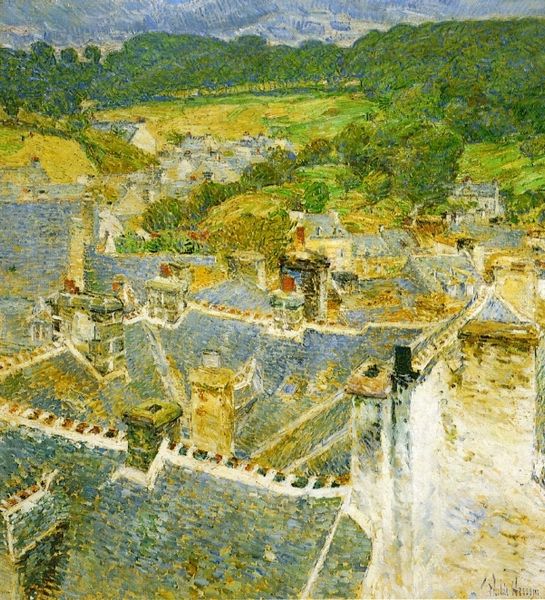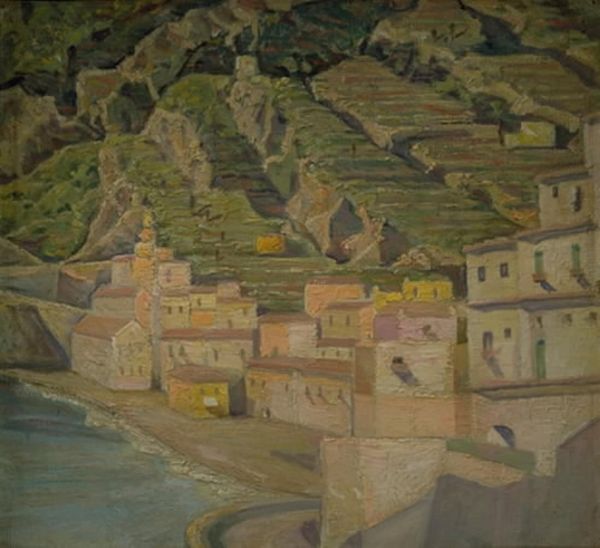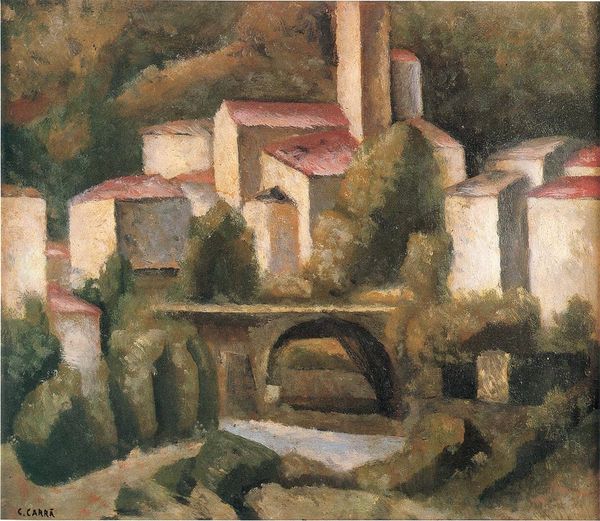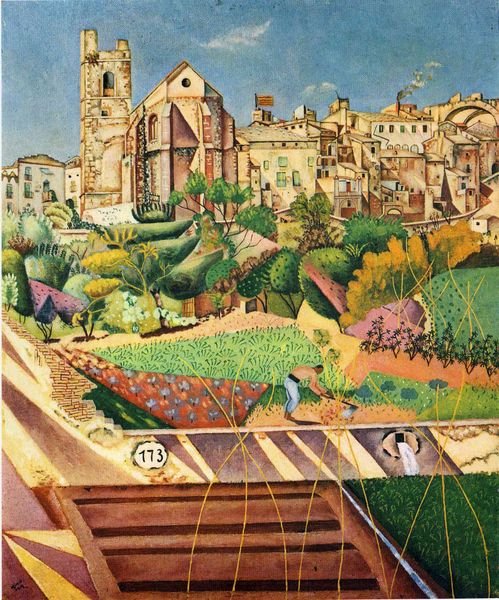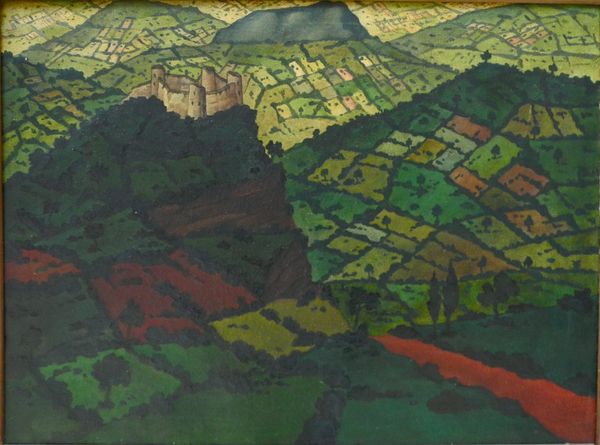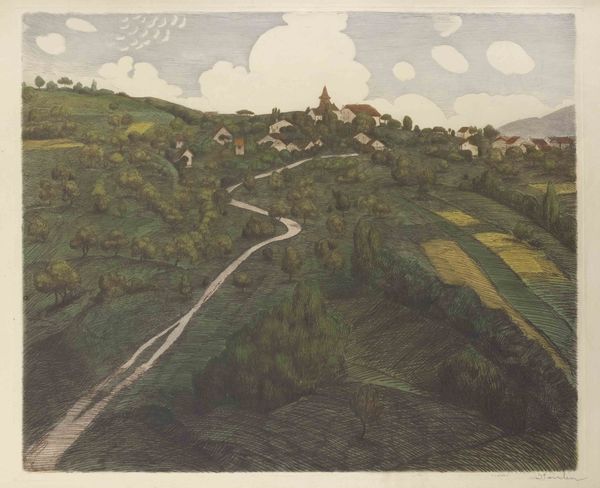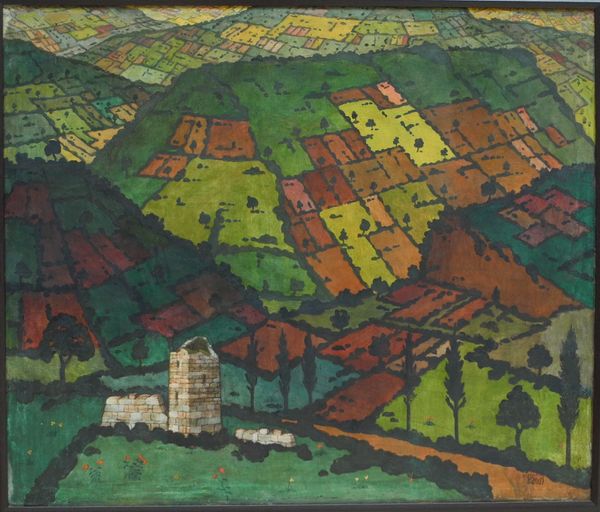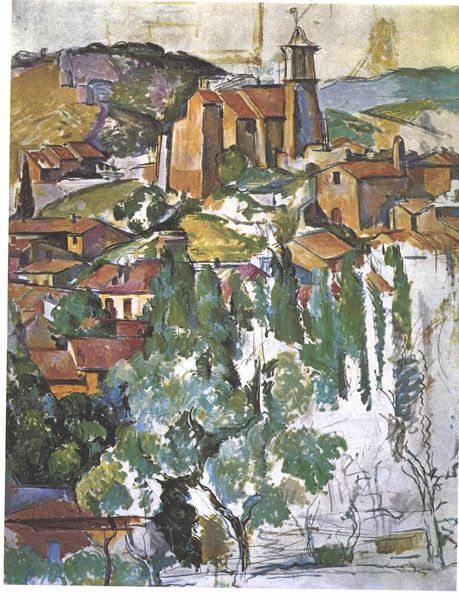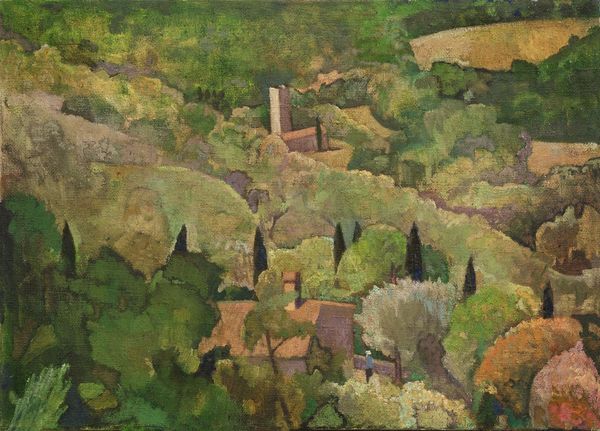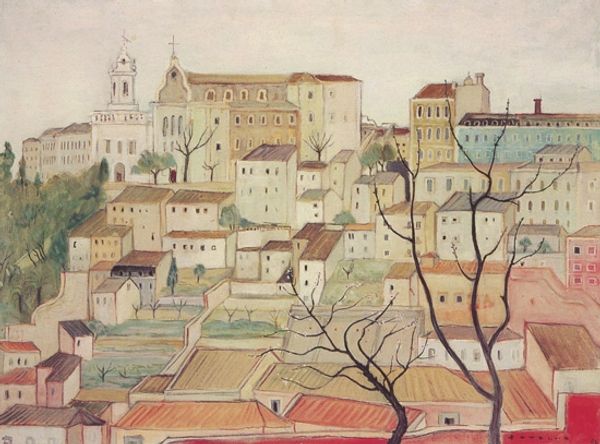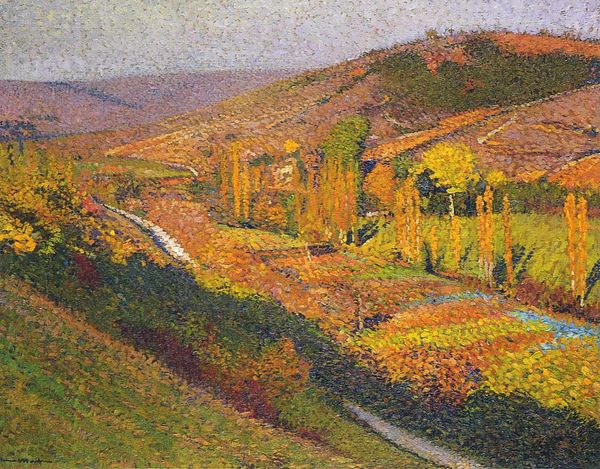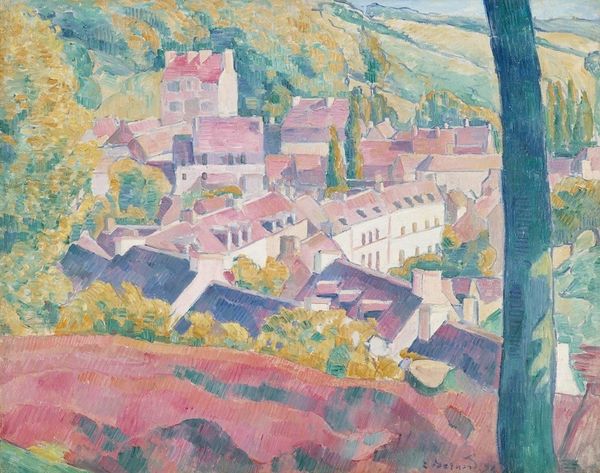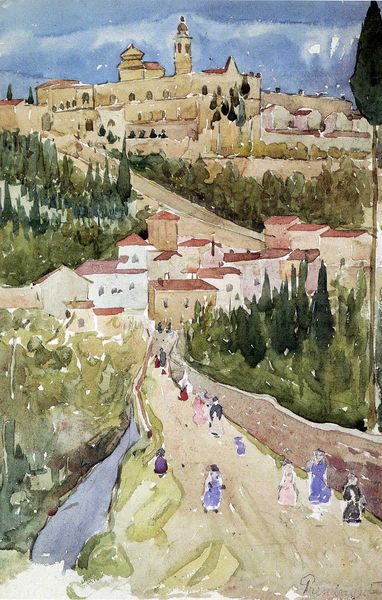
painting, watercolor
#
architectural landscape
#
painting
#
landscape
#
house
#
watercolor
#
folk-art
#
geometric
#
naive art
#
cityscape
#
watercolor
Copyright: M.C. Escher,Fair Use
Curator: Welcome. We're looking at M.C. Escher's "Farmhouse, Ravello colour," created in 1931. It's a watercolor piece. Editor: The first thing that strikes me is the flattened perspective. It's almost as if he’s created a stage set rather than a landscape. Curator: That's a perceptive observation. Escher, while celebrated for his mathematically inspired prints, began his career making more conventional landscapes. This work offers insights into his early artistic development within the context of early twentieth century art and travel. Editor: The colour palette, while restrained, is quite effective. Notice how the stark white of the farmhouse contrasts with the muted greens and purples of the surrounding vegetation and stone. Curator: Indeed. Ravello, perched high above the Amalfi Coast, has a history steeped in tourism. Hotels and villas cropped up to attract wealthy patrons, thus framing Escher’s own experience and representation of this ancient place. His choice of the farmhouse, and his distinctive rendering of the village point toward a desire to portray Italy away from those major sites and crowds. Editor: There's almost a naive quality to the geometric shapes – the cubed terraces, the rounded trees – all rendered with such precision, and they lend a distinctive folk-art feeling. Do you think that's intentional? Curator: The geometric composition possibly alludes to architectural studies but also speaks to a broader interest of modern artists, like Picasso, in geometry in their representation of the physical world. However, this style seems like Escher moving towards something new. What he absorbs from his travels shapes how he approaches both the aesthetic and social realities. Editor: The social realities of Italy shaped by modernity, represented through very stylized trees! Thank you, it has been insightful. Curator: Agreed! Seeing this landscape within this frame truly illustrates his innovative eye and contextual approach.
Comments
No comments
Be the first to comment and join the conversation on the ultimate creative platform.
